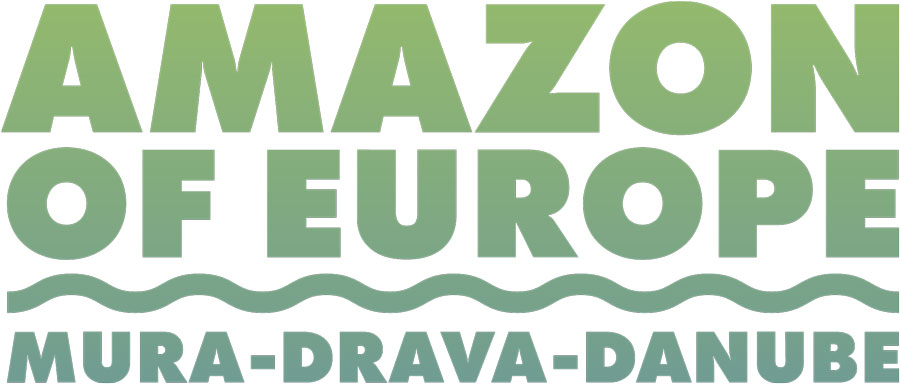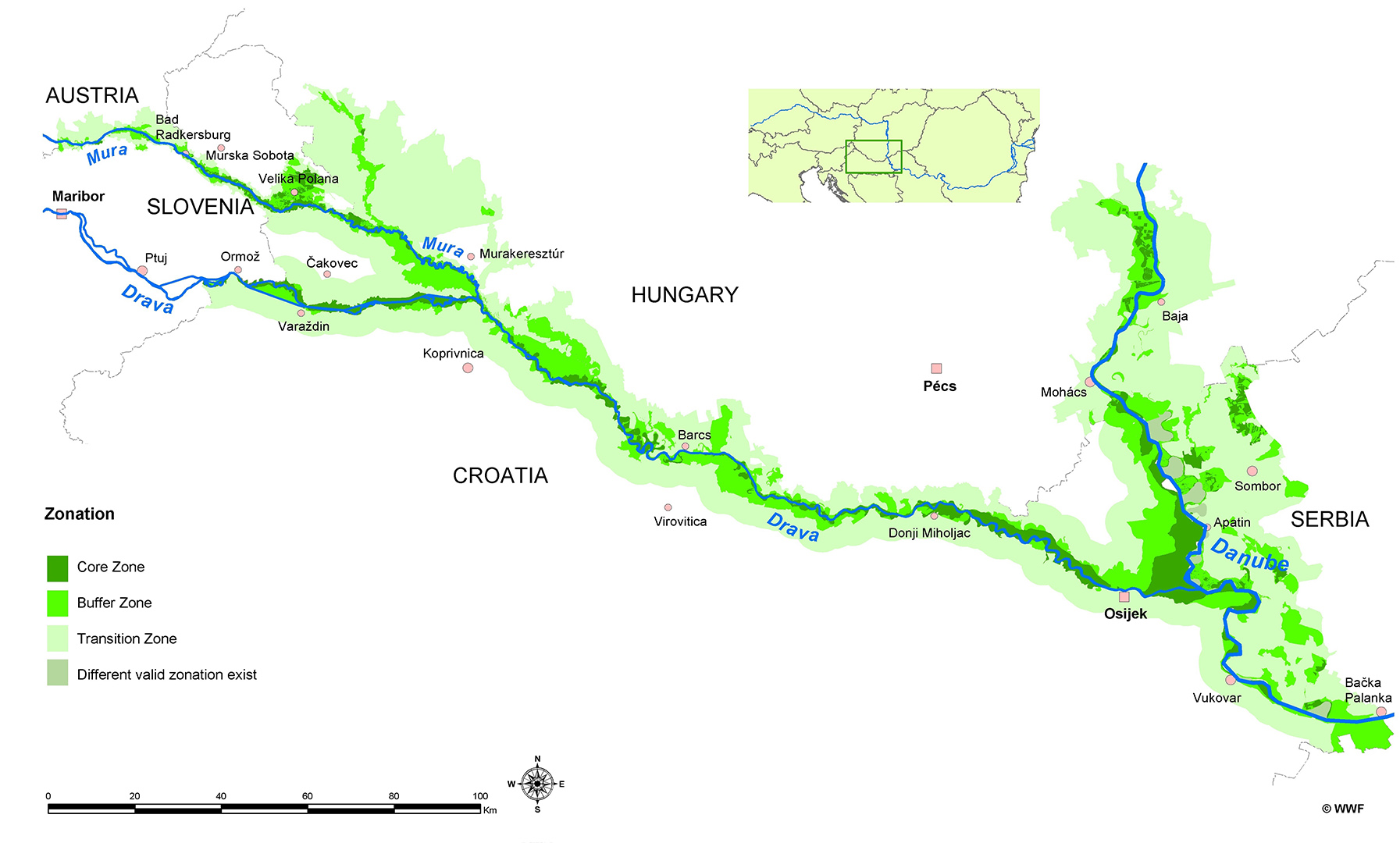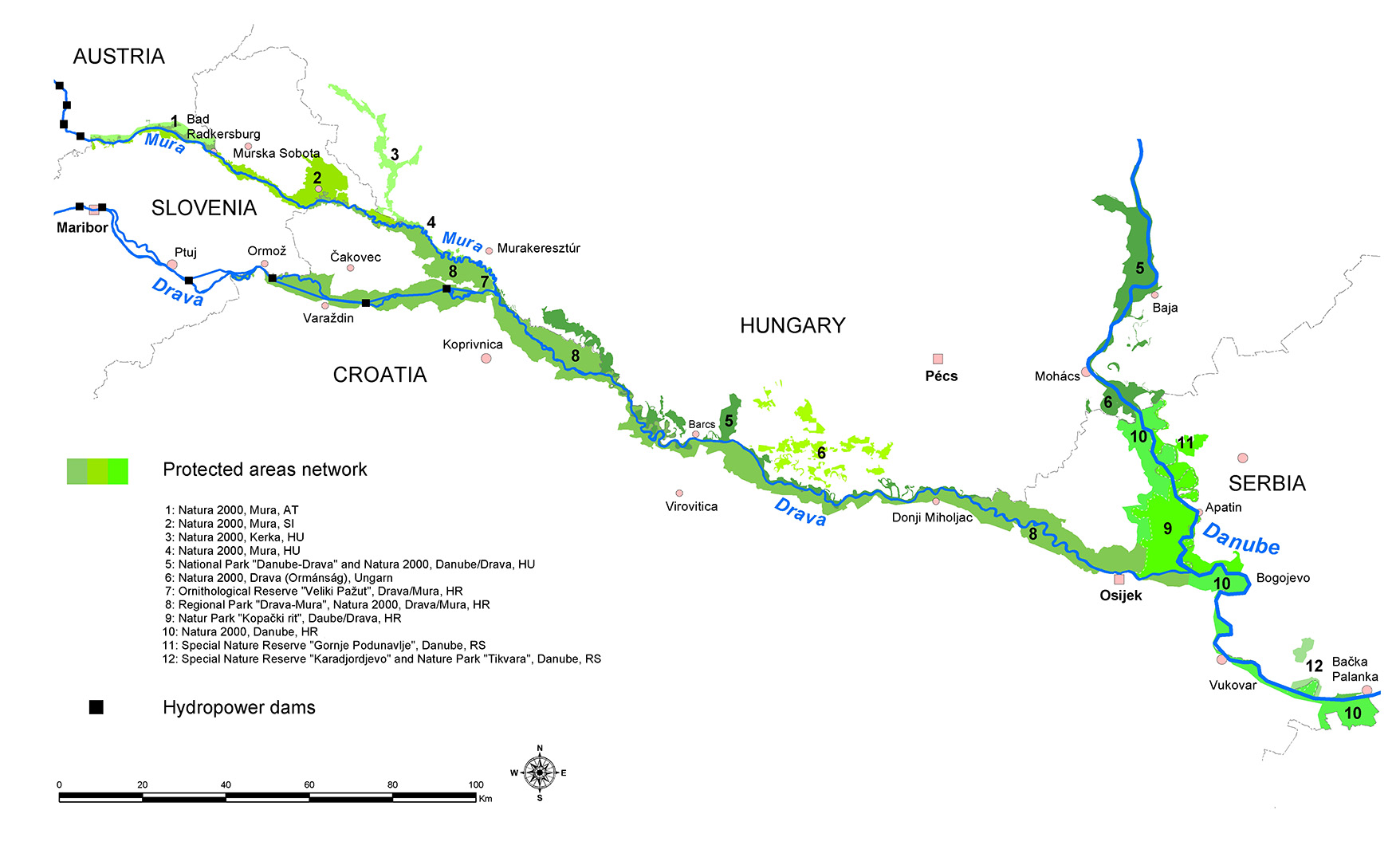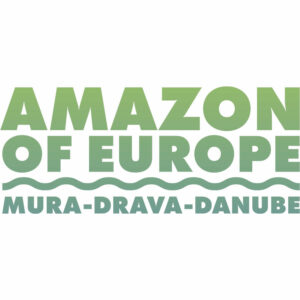Protection
The biosphere reserve is divided into three zones:
- A core zone (90,000 ha, 10%) focusing on strict nature conservation
- A buffer zone (180,000 ha, 20%) allowing traditional land uses such as extensive agriculture
- A transition zone (660,000 ha, 70%) supporting sustainable regional development.
This zoning approach aims to conserve ecosystems, develop the region in a socio-economic and environmentally sustainable manner, and promote education, research and environmental monitoring.
The core and buffer zones of the TBR MDD are legally protected by 12 large protected areas, which form the ecological backbone of the reserve. This network includes Natura 2000 sites, regional and national parks and nature reserves, which together form a mosaic of protected landscapes that ensure the ecological integrity of the region.
Biosphere reserves are internationally recognised by UNESCO, designated by national governments, and remain under the sovereign jurisdiction of the countries in which they are located. The establishment of biosphere reserves began with UNESCO’s Man and the Biosphere (MAB) programme in 1970. As borders between states are political rather than ecological, ecosystems often cross-national boundaries and may be subject to different or even conflicting management and land use practices. TBRs provide a tool for collaborative management. A TBR is an official recognition at the international level and by a UN institution of the political will to cooperate in the conservation and sustainable use of a shared ecosystem through joint management. There are currently 759 sites in 136 countries (status: 2024), of which only 21 are transboundary and most are bilateral.
Natura 2000
Natura 2000 is the largest coordinated network of protected areas in the world, covering around 19% of the EU’s land area and 9% of the EU’s marine area as of January 2024. Established under the EU’s Birds and Habitats Directives, it aims to ensure the long-term survival of Europe’s most valuable and threatened species and habitats.
Natura 2000 sites provide numerous benefits:
- Protection of biodiversity and ecosystems
- Clean air and water
- Natural flood protection
- Opportunities for recreation and improved well-being
- Green jobs in harmony with nature conservation
- Conservation of historic cultural landscapes
Natura 2000 sites are open to human activities such as walking, cycling and kayaking, as long as they do not harm nature. To learn more about Natura 2000 visit the official Natura 2000 Website of the European Commission or find protected areas within the TBR MDD as well as near you on the official interactive map.
This system protects critical habitats such as floodplain forests, river islands and oxbow lakes. It provides refuge for threatened species such as the white-tailed eagle, black stork and sturgeon.
Conservation efforts include:
- Protected area management: Efforts are being made to harmonise the status and management of the 12 major protected areas to establish a consistently managed core and buffer zone across the TBR MDD.
- Ecological river management: There’s a push to change outdated river management practices, such as additional channelling or gravel and sand extraction, to more ecologically sound and integrated approaches that recognise the benefits of natural river dynamics, and ongoing efforts to create a harmonised approach to river management across the TBR MDD.
- Stopping plans for new hydropower dams: Ongoing efforts to prevent the construction of new hydropower dams that would further fragment river ecosystems and disrupt natural flow regimes. Efforts are also being made to change the operation of existing dams that have a negative impact on downstream river sections.
By protecting the Amazon of Europe, the five countries are working together to safeguard biodiversity, natural resources and cultural heritage for future generations.



